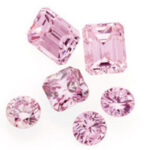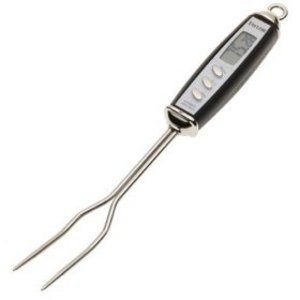“Diamonds are a girl’s best friend!”, and now you have to buy one or two for her. A diamond is one of the hardest things in the earth. They are a 10 on the Mols scale. Also, there are four (4) C’s of diamonds that you should know about before you begin your hunt for the perfect stone. They are Carat, Cut, Color, and Clarity and they are all relative to each other.
First of all, let me start out by saying that 1 carat (1ct.) diamonds make up only 5% of all diamonds that are mined and sold at a commercial level. This is why when you go to check out the price of a diamond, the 1ct. jumps in price, and, needless to say, that the 2ct. is an even greater increase. This fact brings me to my first C of diamonds, Carat. One carat is equal to .2 grams in gemstones. Carat weight is not a factor in the quality of the gemstone; it is simply how much the gemstone weighs.
The second C of diamonds is the Color. The color of a diamond is determined by how white to yellow/brown a diamond is. The scale for the color of a diamond is ranked by the alphabet, starting with D and ending at Z. The color of a diamond is broken up into sections on this scale. They are as follows:
D-E-F = Colorless
G-H-I-J = Near Colorless
K-L-M = Faint Yellow
N-O-P-Q-R = Very Light Yellow
S-T-U-V-W-X-Y-Z = Light Yellow
Z+ = Fancy Color
Now when picking out a diamond, you might want to think about what kind of mounting you are planning on setting the stone in. If you set a colorless stone into a yellow gold setting, the yellow gold will more than likely reflect the gold color onto the diamond, making it not look its best. Your better bet would be to set a colorless diamond into a White Gold or Platinum setting so that the white color of the metal will reflect it’s white color back onto the diamond, thus making it shine even more. And vice-versa too, if you set a low near colorless to faint yellow diamond into a Yellow Gold setting it will look it’s best and not look as noticeable in color because the diamond and the metal will look good together. Now if you set a diamond of low near colorless to faint yellow in White Gold or Platinum the two colors will clash and the diamond will actually stand out as more of a yellow diamond. I recommend anything above a H-I when purchasing for an engagement ring. When purchasing for a bracelet or earrings, you can get away with a J-K color of diamond. Lastly on color, you might notice there is a Fancy Color. This is noted by a Z+ rating. All canary (brightly yellow), red, blue, and green are considered Z+, Fancy Diamonds. Most of these diamonds are usually sold at auction unless they are smaller stones, usually set as a cluster of diamonds in one piece of jewelry.
The third C is Clarity. Clarity denotes how many inclusions are inside the diamond. These inclusions are imperfections that are “born” with the diamond when it formed in the earth. These are also called the “fingerprint” of a diamond. No two diamonds are the same for this matter. It is very similar to the fingerprint of a human finger. Clarity has its own scale also. It is as follows:
FL – Flawless
IF – Internally Flawless
VVS1 – Very Very Slightly Included 1
VVS2 – Very Very Slightly Included 2
VS1 – Very Slightly Included 1
VS2 – Very Slightly Included 2
SI1 – Slightly Included 1
SI2 – Slightly Included 2
I1 – Included 1
I2 – Included 2
I3 – Included 3
A flawless diamond is a perfect diamond. This diamond will have no inclusions at all in the diamond. An Internally Flawless diamond is a diamond that has no flaws inside the diamond, but there might be an insignificant surface blemish. The VVS1 and VVS2 diamonds are diamonds that you would need a 30x magnification to see any flaw in the diamond. The VS1 and VS2 diamonds are graded so that you would need a 10x magnification to see any flaw in the diamond, and although you have a 10x magnification the flaws will still be difficult to see in the VVS and VS quality stones. The SI1 and SI2 stones are easy to see with a 10x magnification, but difficult to see the naked eye. The I1-I3 diamonds have flaws that are easily noticeable with the naked eye. You won’t need a magnification device to notice the inclusions. Now you might be asking yourself, “What is an inclusion?”. Well an inclusion can be a number of things. Inclusions consists of Carbon spots, Air bubbles, Internal cracks (otherwise known as feather cracks), or white points. Pretty much the fewer the flaws the higher the grading and the more expensive the stone is. Your market value for an average stone is usually graded around an SI – I2. Usually anything above the SI range is a fancier stones and will thus cost a great deal more.
Lastly I would like to talk about the cut of a diamond. The cut of a diamond is how proportional the diamond is so that the most amount of light will reflect back through the top of a diamond. Cuts are noted as follows:
Excellent
Well
Shallow
Deep
Too Shallow
Too Deep
An excellent cut diamond means the diamond is totally proportional all the way around the diamond. It also means that is has been cut by a master jeweler who is a jeweler that has been cutting diamonds for at least 10 years. This excellent cut will give your diamond the best reflection and “sparkle” for your diamond. The next cut, the well cut, is the most popular cut diamond. Most of the diamonds you find at a commercial value will be a well cut diamond, in which the diamond will still reflect the light back through the top of the diamond, but not as precise as the excellent cut. A Deep or Shallow diamond will loose about 50% of is reflection because the diamond is not as proportional and will make the diamond look a little darker then a well or excellent cut diamond. A Too Deep or Too Shallow diamond will lose pretty much all of the diamonds reflection. The rays will reflect toward the bottom or sides of the diamond rather than the top and there will be no sparkle or fire in the diamond. I recommend a Well – Excellent Cut diamond, depending on how much you’re looking at spending. Do not get cut confused with the shape of a diamond. The shape is the look of the diamond, round, princess, marquise, radiant, emerald, trillion and so forth. The most traditional shape is the Round. The Princess has become a very popular cut recently and the others noted are usually more obscure cuts, although you will find that of these obscure cuts the marquise is the most popular of these.
To rap up my discussion on diamond, I want to talk about a diamond certification and/or appraisal. A certified diamond means that the diamond comes with a card or papers breaking down the four C’s of a particular diamond. In addition to stating the color, clarity, cut, and carat of the diamond, it will also usually denote the dimensions of the diamond, whether it is laser inscribe with a certification number which will make the diamond to the certification number. Also if the diamond is set into a setting, the certification will denote what type of metal the stone is set in and it will give a brief description of the diamond and setting. Some but not all certifications will state an estimated price for the diamond. The reason why some do not is that the price of a diamond changes on a daily basis and it would be a very unstable estimate due to the fact that after the stone is mined, shipped, certified, brought through controls and customs, handled by a vendor then shipped to a store for you to buy, the price has definitely changed. The good thing though is that diamonds always appreciate in value, similar to a house. So you cannot really go wrong. I suggest getting a certified diamond that way you can prove that a particular diamond is yours and you can verify the diamond if you are suspecting a diamond switch with the laser inscribed certification number or by identifying the “fingerprint” of the diamond by knowing where certain inclusions are in the stone. Now if your diamond is not certified do not worry. You can always take it to a certified appraiser and have your diamond appraised, which is the same as a certification card. In fact if your diamond did come certified you might still want to take it to an appraiser because the quality of a diamond is in the eye of the beholder, which means that 2 separate individuals could easily grade the same diamond with a different grade.
I hope that this gives you a little help in choosing the perfect diamond for you or that special someone that you are buying it for. Just remember the 4 C’s of a diamond and ask for certification if it is available. Also remember that the 4 C’s are relative to each other. You would not want to have a great color diamond, but a horrible clarity diamond with an alright cut, because the mass amount of imperfections in the stone will not accentuate the color of the diamond and cause the rays of light to escape the diamond from another position other than the top of the diamond. So happy hunting for that girl’s best friend!



